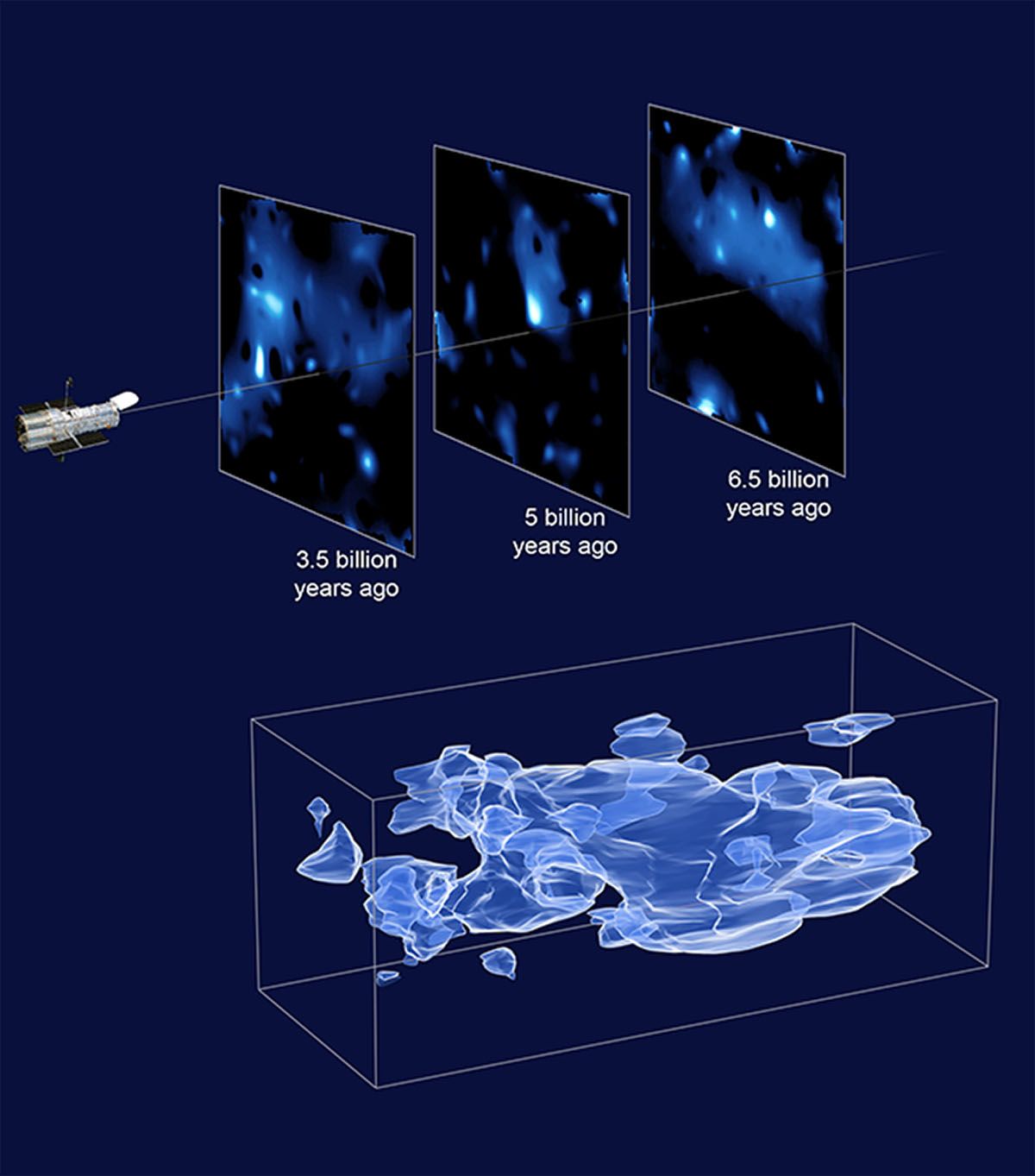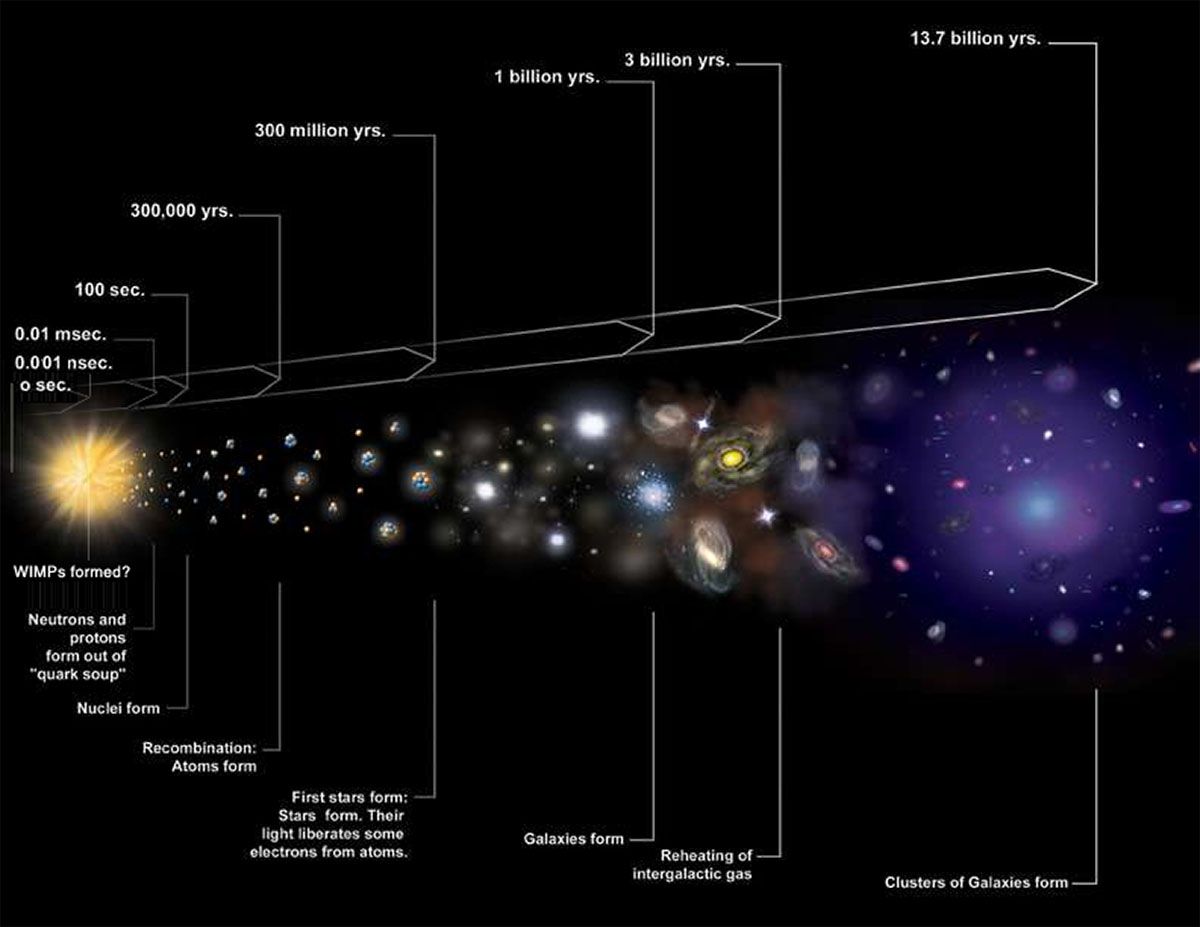Imagine if the vast cosmic sea isn't just scattered with stars, planets, and galaxies that we can see, but also harbors hidden galaxies, entirely composed of an enigmatic entity called atomic dark matter.
While this concept might be lifted from the pages of a sci-fi novel, it is a fascinating theory that today's astrophysicists are rigorously examining.
Understanding Dark Matter
Let's delve into the core concept of dark matter. Imagine you're holding an apple. You can see it, feel it, and if you're hungry, even taste it. It's tangible because it interacts with light and other forms of matter.
Dark matter, on the other hand, is a unique player in the game of cosmic existence. It doesn't interact with light or regular matter, making it invisible and untouchable. Yet, it possesses mass and gravity which immensely impacts the universe.
Remarkably, dark matter is not a rare, exotic feature found only in the remote corners of space. It comprises a staggering 80% of the mass in each galaxy and a cluster of galaxies throughout the cosmos.

Just imagine, for every visible star or galaxy, there's a lot more of this invisible material exerting gravitational pull and shaping the universe as we know it!
The fascinating part about dark matter is its elusive nature. Like a shadow puppet show, we only see the effects of dark matter but not the puppeteer itself.
We can observe how galaxies spin and how light bends as it passes massive objects, and these observations suggest the presence of a lot more matter than we can see.
What could this phantom matter be made of?
One hypothesis is that it's composed of new or multiple types of particles that we have yet to discover. These particles might operate differently from the ones that make up the matter we're familiar with - atoms, molecules, stars, planets, and everything you and I are made of.
This unseen matter and its possibly unknown constituents deepen the enigma of dark matter, creating a compelling puzzle for scientists to solve.
Atomic Dark Matter and Shadowy Galaxies
Now, imagine a universe parallel to ours, where dark matter doesn't just exist as invisible, individual particles but interacts with itself through its own forces.
It's like having a secret language spoken only by dark matter particles, inaudible and undetectable to the regular matter we're familiar with.
This idea of extra dark matter particles and forces isn't born from wild imagination but is deeply rooted in our understanding of the laws of nature.
It's similar to how electricity and magnetism were once considered separate forces but are now known to be two aspects of the same phenomenon.
There could be hidden symmetries and parallels in nature that we've yet to discover, and these could include additional dark matter particles and forces.

Diving deeper, let's consider a unique variant of dark matter - atomic dark matter. These are not atoms as we know them, composed of protons, neutrons, and electrons.
Instead, they're dark counterparts, made up of dark protons and electrons bound together, akin to the way regular atoms are constructed.
What could happen when these dark atoms get together?
Just as our regular atoms cluster to form stars and galaxies, atomic dark matter might do the same, constructing its own unique formations. They could give birth to what we might call 'shadowy galaxies,' entire galaxies formed not of regular atoms but of these dark atoms.
Imagine, a parallel universe within our universe, invisible to us, and abuzz with rapid star formation! It's like discovering an entire new world, right here, but unseen.
Star Formation and Atomic Dark Matter: The Astounding Simulation Results
Astrophysicists have developed sophisticated simulations to peek into the hidden world of atomic dark matter and its role in galaxy evolution.
Using advanced mathematical models and high-powered computers, they recreate the birth and growth of galaxies, this time with a twist - the inclusion of atomic dark matter.
These cosmic experiments reveal some dramatic differences in the evolution of galaxies. When the atomic dark matter is part of the equation, galaxies don't just follow the conventional path.
They exhibit new patterns and behaviors, unfolding an alternative cosmic story right before our eyes.
What's surprising is that even a tiny sprinkle of atomic dark matter can have a huge effect on how galaxies evolve. Picture it as the pinch of salt in a recipe that can drastically enhance the dish's flavor.
With just 6% of total dark matter in atomic form, the evolution of galaxies can take a different route.
Atomic dark matter, rather than being a loner, has a tendency to bunch up, forming what scientists call 'dark stars.'
Imagine a star-like object, not blazing with light, but dark and mysterious.
Moreover, these dark stars can potentially act as cosmic seeds, triggering the formation of black holes, those enigmatic entities that are the stuff of both scientific studies and science fiction!
Let's zoom in on the star formation process. In a galaxy with simple dark matter, stars are formed at a certain pace, like the ticking of a clock.
However, add atomic dark matter into the mix, and it's like the clock starts ticking faster.
Simulations indicate that galaxies with atomic dark matter show a much more rapid rate of star formation compared to their simple dark matter counterparts.
It's as if atomic dark matter pushes the cosmic 'fast forward' button, speeding up the creation of new stars and potentially giving birth to a universe brimming with cosmic life.
The Ongoing Quest for Atomic Dark Matter
The hunt for atomic dark matter is ongoing. Just like detectives piecing together clues in a mystery, scientists are working to reconcile our current understanding of the universe with the intriguing possibilities presented by atomic dark matter.
However, not all models or theories pass the rigorous tests of scientific scrutiny.
As our knowledge expands, some models of atomic dark matter that once seemed promising are no longer viable. They may contradict what we observe in the universe, or fail to provide convincing explanations for the phenomena we see.
But this process of elimination is part of the scientific journey. On the other hand, some models remain plausible, passing the tests we can currently apply and still agreeing with our observations.

The story of atomic dark matter is far from complete. The current chapters are filled with fascinating ideas and discoveries, but there are still many pages left to turn.
We need more theoretical and experimental research to unravel the complex web of atomic dark matter.
One exciting avenue for future research is through gravitational microlensing studies. This technique, which involves observing how gravity from a massive object can bend and amplify the light from a more distant object, could offer some much-needed clues.
For this purpose, instruments like NASA's Nancy Grace Roman Space Telescope could prove invaluable.
As we continue our cosmic detective work, we inch closer to understanding the hidden universe of atomic dark matter. And who knows? This quest may redefine our understanding of the cosmos itself.
Source: arxiv.org












